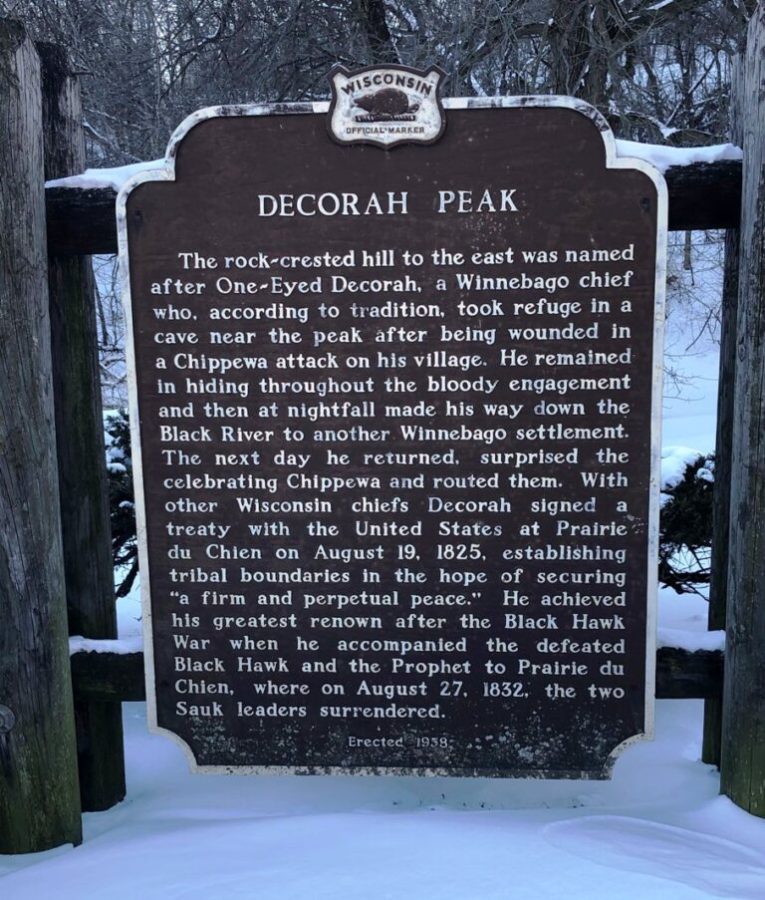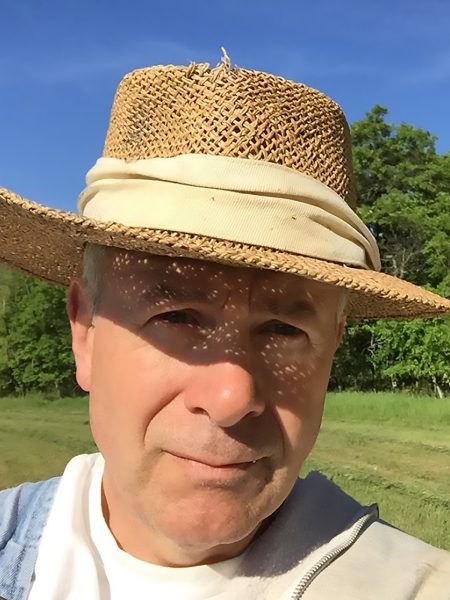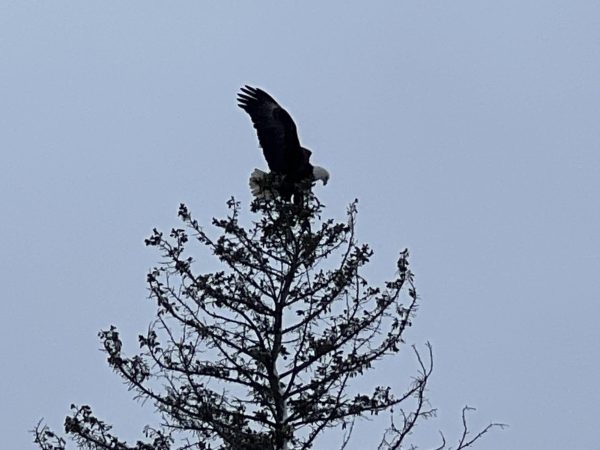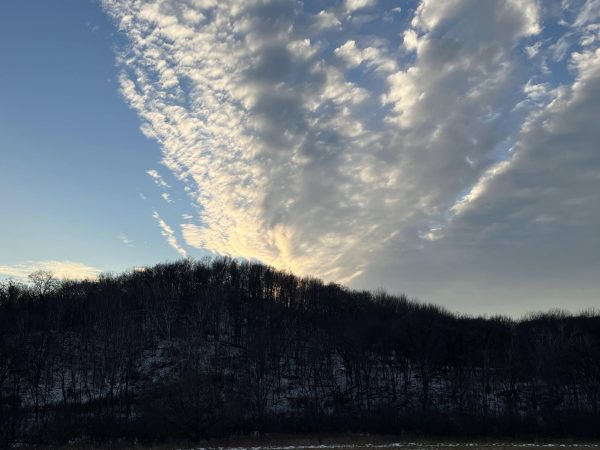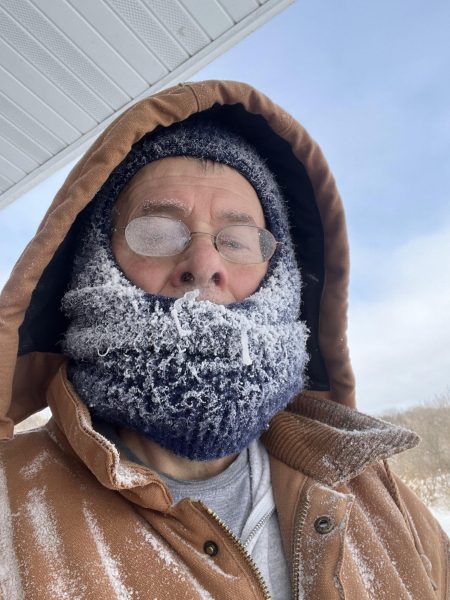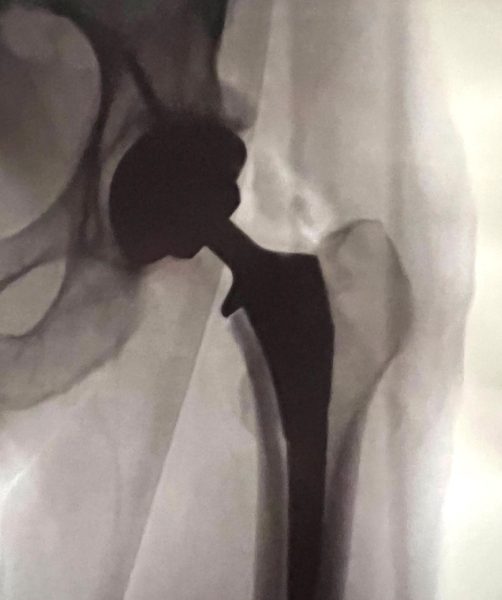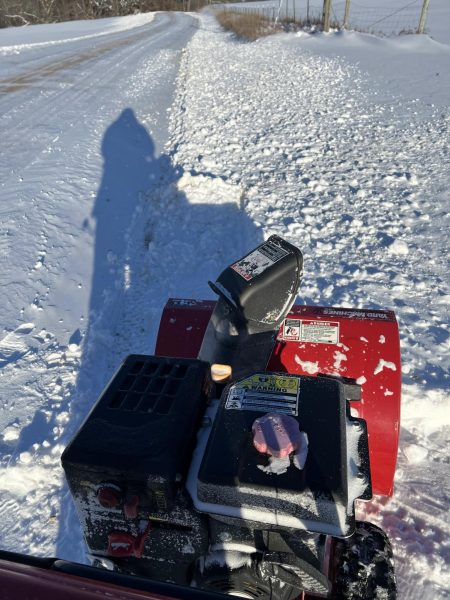Story of Decorah Peak reveals rich history
February 27, 2022
History and geology sometimes come together to tell fascinating stories, such as the rocky outcrop just outside of Galesville known as Decorah Peak.
Standing 1,161 feet above sea level, Decorah Peak is located between Queen Bluff to the southwest and Decorah Mound to the northeast. Geologically speaking, Decorah Peak is an example of Cambrian Lone Rock Formation and is made of sedimentary rock formed some 500 million years ago. As the name suggests, the rocks jut out of the hillside.
I drive by Decorah Peak and other rock formations when traveling to La Crosse. They are much more prominent this time of yea
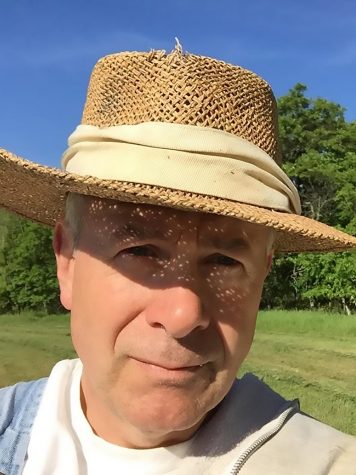
r without the green foliage from the tree line that can sometimes cover the rocks in the summer.
I have never climbed to the top of Decorah Peak, although there is a short trail that takes you there. Apparently, a little agility is required to climb through the rock crevice that takes you to the top.
The rock is named after One-Eyed Decorah, a Native American chief who was also called Wajᵋxetega or Big Canoe. Decorah was chief of a village the Ho-Chunk tribe had on the Black River about 1.5 miles from the rock formation.
The story is — based on historical accounts and tradition — the Chippewa attacked Decorah’s village and he was wounded in the attack. He hid in a cave in the peak and at nightfall made his way down the Black River to another Ho-Chunk settlement. He returned the next day with more soldiers, surprised the celebrating Chippewa and routed them.
According to the 1917 book “History of Trempealeau County,” Antoine Grignon, a French trader and interpreter who talked to Decorah, said, “the battle must have been fought shortly after the War of 1812, and was a bloody encounter, raging furiously all of one day and well into the evening, when the defeated warriors of Decorah fled from the darkening scent of conflict, leaving their dead strewn upon the field.”
Decorah was born near Portage in about 1772 and lost his right eye when he was young. His name Big Canoe came when a French party asked a party of Ho-Chunk for assistance in fighting the British. Decorah and four companions boarded a British ship and the troops surrendered.
Decorah was part of two significant War of 1812 engagements fighting on the side of the British. He was part of the British capture of Fort Mackinac in 1812 and was one of about 650 men that were part of British Colonel William McKay’s attack against Americans in a battle at Prairie du Chien in 1814. He was a signer of the Prairie du Chien treaty in 1825.
Decorah also was a part of the Black Hawk War in 1832. His brother Waukon Decorah had a daughter who was killed by Sauk and Meskwaki raiders in 1829. When the Black Hawk War erupted in 1832, Waukon Decorah was eager to avenge his daughter’s death and was able to persuade his brother One-Eyed Decorah and others from Prairie La Crosse to join in, even though some Ho-Chunks were sympathetic to Black Hawk’s efforts to resist American expansion.
That expansion intensified with the forced removal of the tribe. Treaties signed in 1832 and 1837 called for moving the Ho-Chunk from Wisconsin to northeastern Iowa. They were moved again in 1848 and 1855 to Minnesota, but Decorah and his followers came back to Wisconsin.
Grignon visited Decorah for the last time in the summer of 1863 while he was camped outside of Galesville, according to the 1917 history book.
“He was an old man then,” said Grignon, “his long hair was thin and streaked with gray, and he was nearly blind. But his body was well preserved, and his well-developed muscular form showed what a powerful man he had been. In height, he was a little taller than the average Indian, but he was stocky and solid in build. He was discouraged with the outlook for his people, and said that he had not been dealt with fairly by the government.”
Decorah died near Tunnel City between Sparta and Tomah in August 1864.
“In the dingy, smoky wigwam, among a few of his loyal band, the old chief departed for the “happy hunting ground,” leaving behind the cringing form of poverty that had cursed his old age, and dimmed the glory of his sunset,” the 1917 history book says. “He, who once held sway over his flourishing village, and counted a territory as his domain, larger than Trempealeau County, fell asleep, the feeble ruler of a single tepee, its very dirt and rags not his own.”
But the Decorah family continues. Among Decorah’s descendants were Princess Marie Nounka, after which the present-day Lake Marinuka in Galesville was named. Decorah Prairie is the name given to the fertile land below Decorah’s Peak and Decorah Cemetery stands in the middle of the prairie. Decorah and Waukon in Iowa are named after the Decorah family and it remains a common Ho-Chunk name.
So there’s a lot more to the story than just a rock point. I think I need to take a trip up the path this year to visit Decorah Peak in person.
Chris Hardie spent more than 30 years as a reporter, editor and publisher. He was nominated for a Pulitzer Prize and won dozens of state and national journalism awards. He is a former president of the Wisconsin Newspaper Association. Contact him at [email protected].

